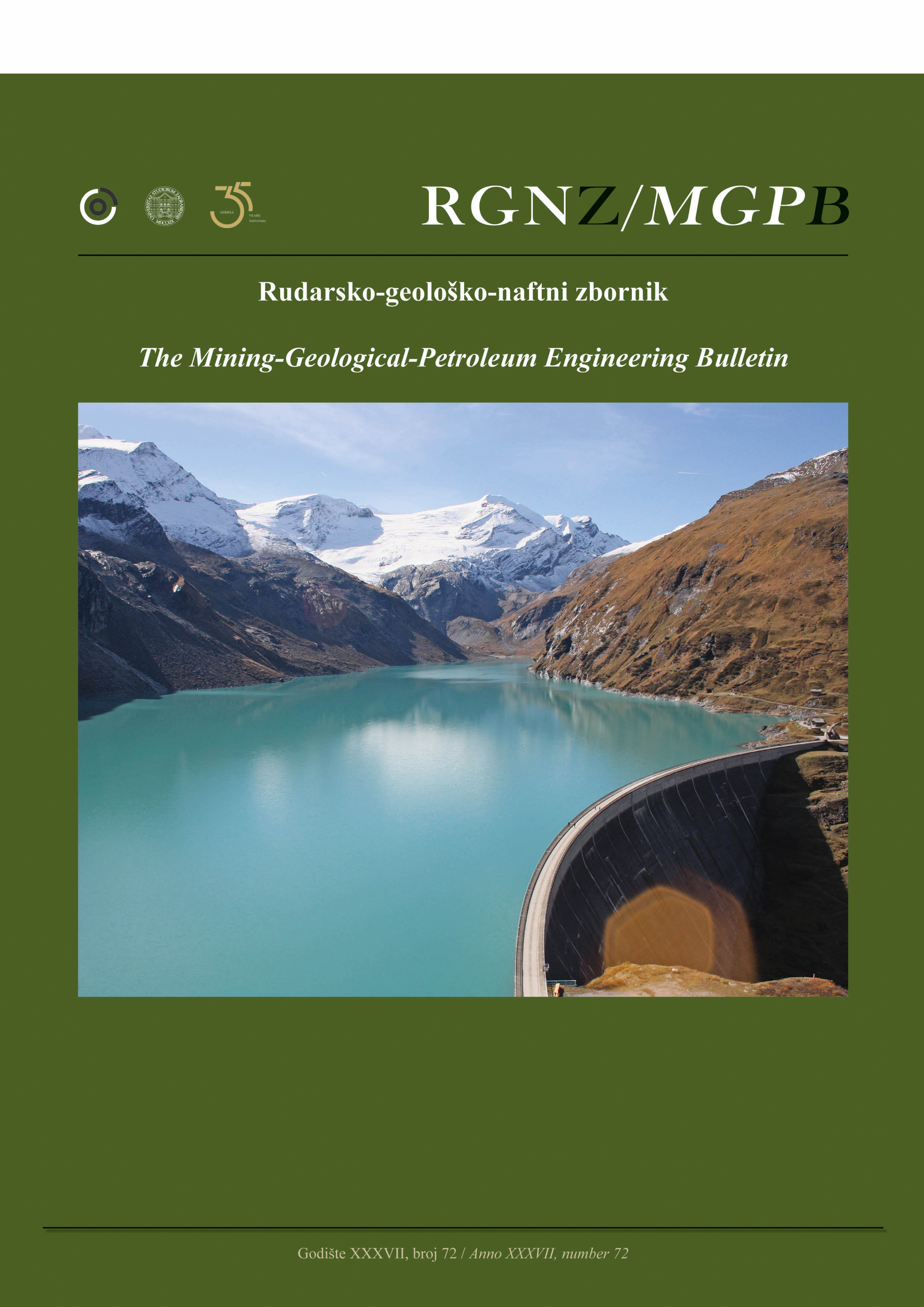The Effect of Rumen Fluid Application on Various Coal Types in Methane Production
DOI:
https://doi.org/10.17794/rgn.2025.1.12Keywords:
rumen fluid, formation water, microbes, coal types, coal bed methaneAbstract
Indonesia is one of the largest coal producers in the world. The conversion of coal into coalbed methane (CBM) by involving methane-producing microbes appears to be a potential alternative to utilizing coal for energy resources. One possible source of methanogens is rumen fluid collected from slaughterhouse waste. Previous studies have reported the possibility of employing rumen fluid to produce methane from coals. To sustain field application, microbiological testing of rumen fluid in CBM reservoir circumstances is required. Therefore, various water formations and coals were involved in the present study. The present study aims to identify methane production by combining rumen fluid as methane-producing microbes, formation water, and various coal types (A: lignite, B: sub-bituminous, C: bituminous, and K: control) at room temperature. The results suggest that supplying microbes from rumen fluid and formation water can produce methane from different types of coal. Microbial activity in all treatments is denoted by pH changes and observing living microbes. Bacilli are the predominant type of microorganism. Due to coal organic compound breakdown, the presence of methanogenic microbial activity is denoted by volatile fatty acids (VFA). The total VFA in all treatments demonstrated a similar declining tendency. It was found that all treatments produce volatile fatty acids in different amounts up to 60 days of incubation. These acids included acetic, propionic, butyric, iso-butyric, iso-valeric, and valeric acids. Acetic acid is the most commonly produced partial VFA, the primary, intermediate compound in methane formation. Treatment A with lignite coal had the maximum gas production. The cumulative gas volume reached 16,400 mL after 60 days of incubation. In contrast, the highest cumulative methane production occurred in treatment C with bituminous coal, amounting to 100.60 mL after 60 days of incubation.
Downloads
Published
Issue
Section
License
Copyright (c) 2025 Dahrul Effendi, Asep Kurnia Permadi, Doddy Abdassah, Bambang Widarsono

This work is licensed under a Creative Commons Attribution 4.0 International License.
Creative Commons-BY
Authors who publish with this journal agree to the following terms:
In agreeing this form, you certify that:
- You read the ethical codex of the RGN zbornik available at journal web.
- You submitted work is your original work, and has not previously been published and does not include any form of plagiarism.
- You own copyright in the submitted work, and are therefore permitted to assign the licence to publish to RGN zbornik.
- Your submitted work contains no violation of any existing copyright or other third party right or any material of an obscene, libellous or otherwise unlawful nature.
- You have obtained permission for and acknowledged the source of any illustrations, diagrams or other material included in the work of which you are not the copyright owner.
- You have taken due care to ensure the accuracy of the work, and that, to the best of your knowledge, there are no false statements made within it.
- All co-authors of this submitted work are aware of, and in agreement with, the terms of this licence and that the submitted manuscript has been approved by these authors.
Publication licence
You retain copyright in your submitted work, according to journal license policy (CC-BY). By signing this form you agree that RGN zbornik may publish it under the publication licence. In summary the licence allows the following:
Anyone is free:
- To copy, distribute, display, and perform the work.
- To make derivative works.
Under the following conditions:
- The original author must always be given credit.
- The work may not be used for commercial purposes.
- If the work is altered, transformed, or built upon, the resulting work may only be distributed under a licence identical to this one.
Exceptions to the licence
In addition to publishing the work printed under the above licence, RGN zbornik will also enable the work to be visible online.
The journal editorial can change the licence rules anytime but it cannot retroactively restrict author(s) rights.


